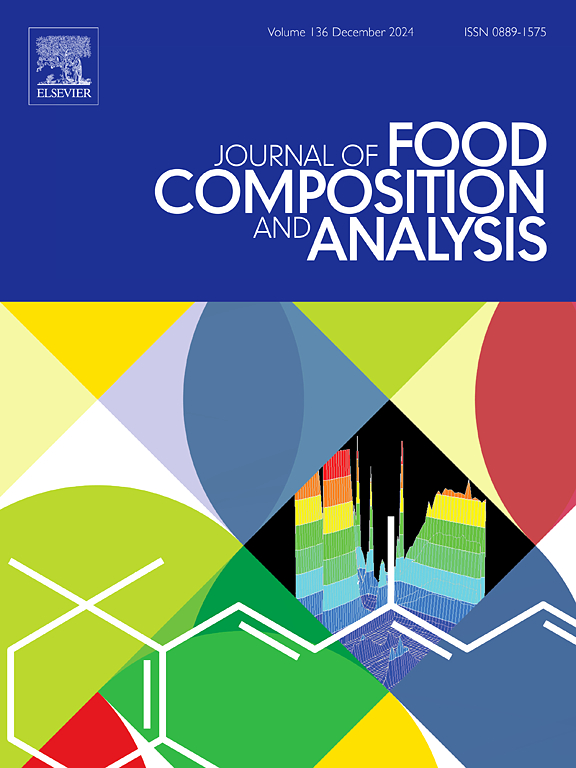Heavy metal(loid)s contamination assessment in jhum soil-rice system, Arunachal Pradesh, Northeast India
IF 4
2区 农林科学
Q2 CHEMISTRY, APPLIED
引用次数: 0
Abstract
The metal(loid)s accumulation in rice grain poses a significant global concern, particularly because rice is widely consumed food in the world. In this study, concentration of lead (Pb), cadmium (Cd), iron (Fe), nickel (Ni), and arsenic (As) was assessed in paddy soil and four different local rice varieties under Jhum Farming (JF) system in the then Lower Subansiri (now Keyi Panyor) district of Arunachal Pradesh, northeast India. Nemerow’s Pollution Index (PIN) in Jhum farming (JF) soils ranges from 0.9 to 1.9, with an average of 1.4, indicating 'clean' to 'slight' pollution. Except for two sites, others were classified as pollution-free based on PLI (Pollution Load index). The mean hazard quotient (HQ) for non-carcinogenic risks from heavy metals through rice intake was within safe limit (HQ<1) for all local rice varieties (Amo, Baede, Lemeh and Riyu). Overall, no significant non-carcinogenic health risks due to studied metals including arsenic under traditional Jhum Farming (JF) system. Regular monitoring of heavy metal(loid)s in soil-rice system is important to ensure the safety of rice production and take suitable management options.
求助全文
约1分钟内获得全文
求助全文
来源期刊

Journal of Food Composition and Analysis
工程技术-食品科技
CiteScore
6.20
自引率
11.60%
发文量
601
审稿时长
53 days
期刊介绍:
The Journal of Food Composition and Analysis publishes manuscripts on scientific aspects of data on the chemical composition of human foods, with particular emphasis on actual data on composition of foods; analytical methods; studies on the manipulation, storage, distribution and use of food composition data; and studies on the statistics, use and distribution of such data and data systems. The Journal''s basis is nutrient composition, with increasing emphasis on bioactive non-nutrient and anti-nutrient components. Papers must provide sufficient description of the food samples, analytical methods, quality control procedures and statistical treatments of the data to permit the end users of the food composition data to evaluate the appropriateness of such data in their projects.
The Journal does not publish papers on: microbiological compounds; sensory quality; aromatics/volatiles in food and wine; essential oils; organoleptic characteristics of food; physical properties; or clinical papers and pharmacology-related papers.
 求助内容:
求助内容: 应助结果提醒方式:
应助结果提醒方式:


